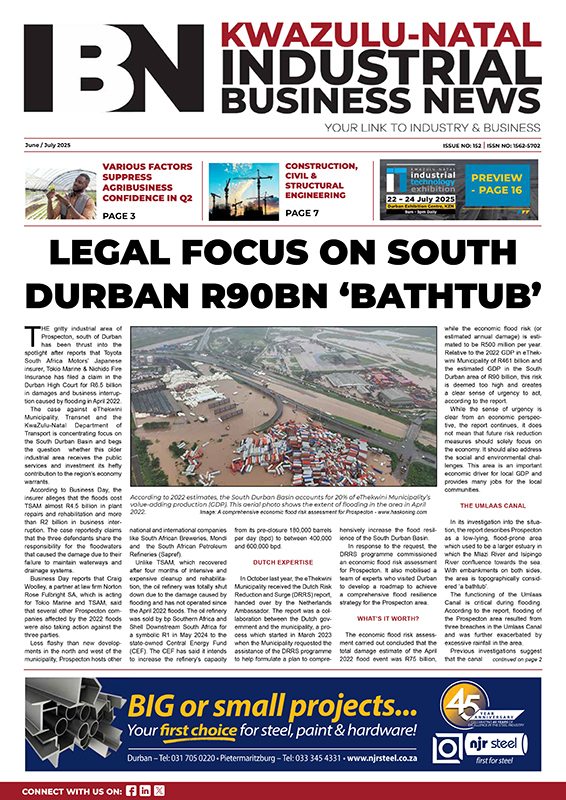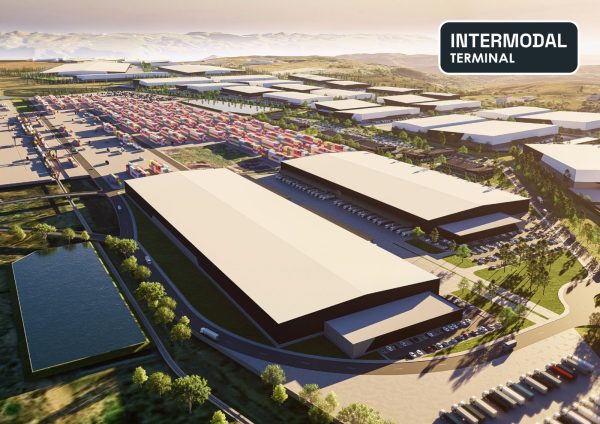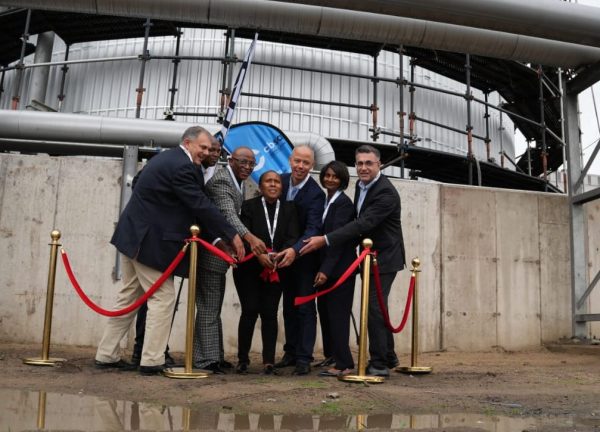SOUTH Africa’s drive to modernise its freight network gained momentum last week with the launch of the Insimbi Ridge Logistics Precinct at Cato Ridge, one of the country’s first large-scale, privately funded freight-corridor developments.
The Insimbi Ridge development, located 52 km from Durban Port via the N3, will introduce new inland staging and intermodal capacity that will directly relieve pressure on the Port and N3 corridor. Once fully developed, it will be a high contributor to the economy and create jobs, contributing to both local and national growth.
The Precinct demonstrates that private capital is ready and able to fund freight-corridor infrastructure – an essential shift as Transnet and public finances face severe constraints. As the first provincially designated freight node under Strategic Integrated Project 2 (SIP 2) – the national freight, rail and logistics corridor linking Durban to Gauteng – it provides a replicable model for private participation in national logistics infrastructure.
Developed by Assore SA PropCo, a wholly owned subsidiary of Assore SA (Pty) Ltd, together with the Rail Development Corporation (RDC) as development partner, Insimbi Ridge has been designated as a provincial and municipal catalytic project. The Precinct project forms part of KZN government’s strategy to integrate private investment into critical logistics infrastructure to decongest the Durban port, improve freight efficiency along major corridors, and stimulate regional industrial growth.
“Insimbi Ridge is evidence that South African business is still prepared to invest in long-term infrastructure when governance and policy conditions are right,” said Tiaan van Aswegen, deputy CEO, Assore SA. “It proves that partnerships between government and disciplined private capital can deliver structural reform without burdening the fiscus.”
KwaZulu-Natal MEC for Economic Development, Tourism and Environmental Affairs, Rev Musa Zondi, welcomed the initiative as evidence of effective public-private collaboration and alignment with KwaZulu-Natal’s sustainable-industrialisation strategy.
Strengthening logistics performance
“This is rail reform made real,” said Sibusisiwe Nodada, RDC project lead. “Insimbi Ridge links port, rail and road in one controlled node. It presents a blueprint of how private operators can strengthen national logistics capacity.”
With full build-out planned over 20 to 25 years, Insimbi Ridge will host integrated logistics, warehousing, and manufacturing zones designed to handle inland freight flows to and from Durban. Once fully developed, the Precinct will generate long-term fiscal and employment benefits for the Cato Ridge region and provide confidence for the private sector to invest in South Africa’s infrastructure reform path.
Rehabilitation and responsible growth
The precinct occupies 500 hectares of developable land with the approved Phase 1 of 351 hectares within a 2,080-hectare holding owned by Assore SA PropCo.
The wider site includes the former Cato Ridge Works smelter footprint. The smelter’s closure in 2025 triggered a three to five-year remediation programme which will commence once all the required permitting and approvals are in place and the remediation will be financed by Assmang (Pty) Ltd, the previous operator of the smelter.
The remediation and redevelopment of the Cato Ridge Works smelter footprint converts previously industrial land into productive economic infrastructure, reducing embodied-carbon impact and avoiding greenfield expansion.
Environmental Authorisation, Water Use Licence, and Offset Plan approvals are already in place for the 351ha of Phase one of the development.
Alignment with national strategy
The Precinct directly supports the Transnet National Ports Authority’s R90 billion Port of Durban expansion, the National Freight Logistics Roadmap (2023), and the KwaZulu-Natal Investment Strategy 2030. It is also consistent with the Country Investment Strategy (2022) and the National Development Plan 2030, all of which identify freight efficiency and private-sector partnership as core enablers of growth.
“Every container moved more efficiently inland represents a tonne of trust regained in South Africa’s logistics system,” said Anton Potgieter, CEO of The Logistics Group, the holding company of FPT Group, the first development client. “This project is more than construction; it’s proof of delivery,” he said.
Inter-modal linkages
The precinct links road, rail and warehousing capacity within one controlled node, integrating logistics and light-industrial functions to strengthen efficiency along the Durban-Gauteng corridor. It connects directly to the N3 and national rail network via a planned 1.7 km private siding from Cato Ridge Station, complemented by two truck-staging areas due for operation in 2027.
Phase 1, for which FPT is the anchor tenant, will redevelop approximately 33,000 sqm of logistics and industrial facilities within the initial 351-hectare conversion zone. The breaking of ground marks the start of construction on the FPT cold store and warehouse. The wider 3.5 million sqm precinct has been master-planned to attract additional anchor tenants across manufacturing, distribution and intermodal freight operations, creating an estimated 10,000 jobs over its lifespan.









